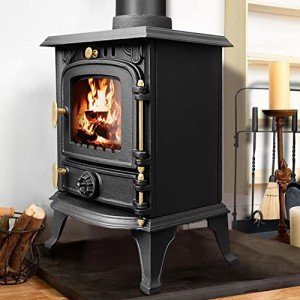Wood Burning and Multi-Fuel Stoves: A Comprehensive Guide
In the last few years, wood-burning and multi-fuel stoves have actually gained popularity as a sustainable and efficient method to heat homes. They provide an appealing alternative to conventional gas or electric heating systems, offering not just warmth however also a lovely visual. This short article explores the benefits, types, installation considerations, and maintenance of wood-burning and multi-fuel stoves to help customers make informed choices.
What Are Wood Burning and Multi-Fuel Stoves?
Wood-burning stoves are developed entirely to burn wood as fuel, while multi-fuel stoves can burn a range of fuels including wood, coal, and peat, offering greater adaptability. Multi Fuel Stove Small differ in design, performance, and usage, dealing with different requirements and choices.
Benefits of Wood-Burning and Multi-Fuel Stoves
- Eco-Friendly:.Wood is thought about a renewable resource, specifically when sourced sustainably. Burning wood releases minimal carbon compared to fossil fuels, successfully lowering one's carbon footprint.
- Cost-Effective:.In numerous regions, wood is less expensive than gas or electricity. Even with the initial purchase and installation expenses, wood-burning and multi-fuel stoves can cause considerable cost savings on heating costs.
- Aesthetic Appeal:.The visual appeal of a real fire includes heat and beauty to a home. Wood-burning and multi-fuel stoves can act as a focal point in any space.
- Energy Efficiency:.Lots of modern stoves are designed to burn fuel more effectively, guaranteeing that more heat is produced from less fuel.
- Self-reliance:.Stoves provide an alternative heat source, particularly in case of power outages, improving energy self-reliance.
Types of Wood Burning and Multi-Fuel Stoves
Understanding the different options available can help consumers pick the very best stove for their needs.
1. Standard Wood Burning Stoves
- Material: Generally made of cast iron or steel.
- Performance: Often consist of a classic design that improves traditional design designs.
- Effectiveness: Low to moderate effectiveness levels (60-80%).
2. Modern Wood Burning Stoves
- Product: Often made with advanced products and ingenious styles.
- Performance: Feature double combustion for higher efficiency and reduced emissions.
- Efficiency: High efficiency levels (up to 90%).
3. Multi-Fuel Stoves
- Adaptability: Can burn wood, coal, and peat.
- Design: Generally developed for easy fuel switching.
- Performance: Efficiency differs with fuel type but generally ideal for varied heating needs.
4. Pellet Stoves
- Fuel Type: Burn compressed wood pellets.
- Performance: Automated feed system for easier use.
- Effectiveness: Very high effectiveness levels (as much as 95%).
Installation Considerations
Before buying a wood-burning or multi-fuel stove, certain factors should be considered regarding installation:
- Location:.Decide where the stove will be set up. Think about proximity to fuel storage and smoke venting plans.
- Chimney System:.Existing chimneys may not constantly be suitable. A brand-new flue system might be needed to satisfy policies and efficiency requirements.
- Local Regulations:.Compliance with regional structure codes, safety policies, and environmental requirements is important. Seek advice from regional authorities or a professional installer.
- Stove Size:.Choosing the suitable size is crucial. A large stove can result in getting too hot, while an undersized stove might not offer enough heat.
Maintenance Tips for Wood Burning and Multi-Fuel Stoves
Correct maintenance of stoves ensures safety and durability. Here are important upkeep practices to adopt:
- Regular Cleaning: Clean the flue and chimney at least once a year or more regularly if used typically.
- Look for Cracks: Inspect the stove and chimney for any fractures or damage that can result in hazardous emissions.
- Use Seasoned Wood: Always use dry, skilled wood to minimize creosote accumulation and optimize effectiveness.
- Check Gaskets: Ensure windows and door gaskets form a tight seal for ideal effectiveness.
FAQs About Wood Burning and Multi-Fuel Stoves
1. Are wood-burning stoves safe?Yes, when
used and kept properly, wood-burning stoves are safe. Constantly follow maker guidelines and regional guidelines.
2. Can Small Multi Fuel Burner use my wood stove for cooking?Many wood-burning stoves can be utilized for cooking; however, inspect the maker's recommendations for safe cooking. 3. How do I pick between a wood-burning and
multi-fuel stove?Selection depends on your fuel availability, choices for heating, and upkeep considerations. Multi-fuel choices offer versatility. 4. What kind of wood should I use?Hardwoods such as oak, maple, and hickory are perfect for burning due to their greater energy content compared to softwoods. 5. How do I know
if my stove is efficient?Look for Small Multi Fuel Stove from acknowledged companies and consider the effectiveness ratings supplied by producers.
Wood-burning and multi-fuel stoves present an efficient,
eco-friendly alternative to standard heater, offering warmth while reducing ecological effect. By choosing the right
kind of stove, making sure correct installation, and dedicating to routine maintenance, property owners can enjoy the numerous benefits these heater offer while adding to sustainability. Whether utilized for a comfortable evening or as a primary heating source, these stoves improve convenience and atmosphere in any home. Table: Comparison of Stove Types Stove Type Fuel Options Performance (%) Maintenance Level Standard Wood Wood 60- 80 Moderate Modern Wood Wood Up to 90 Low to Moderate Multi-Fuel Wood, Coal, Peat Differs Moderate Pellet Wood Pellets As much as 95 Low
| By considering these factors and standards | , customers can | make informed options about incorporating wood-burning or | multi-fuel stoves | into | their homes.

|
|---|
